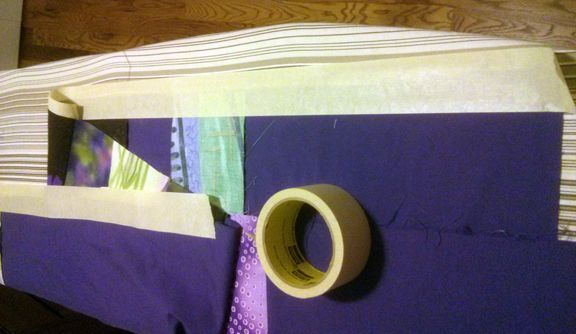Free-Motion Quilting Technique Tips – Quilting Daily

There’s no doubt about it, machine quilting takes time and a whole lot of practice to master. I’ll be honest; lately I’ve been working hard to upgrade my skills from puckered to polished.
Something that always helps my learning process is to find information on a technique from as many quilters and fiber artists as I can. Although the basics of any given technique usually remain the same no matter who’s teaching, each artist offers their own helpful hints and tricks that can be invaluable. Oftentimes one small tip can make a technique start to click for me like it never did before. So, without further ado here are 10 tips for successful free-motion quilting:
Machine Quilting 101
by Frieda Anderson
You’ve made a quilt and now it’s time to quilt it. Where do you begin?
When I started machine quilting more than 20 years ago, I had no idea what I was doing or where to start. I just jumped right in, because I had to machine quilt my quilts or they weren’t going to get finished. Over the years I have discovered a few things that make machine quilting on a domestic sewing machine a little bit easier to do. I know you will find these tips helpful.
1. Keep your sewing machine in good working order. Keep your sewing machine in tip-top shape by having it serviced at least once a year by a professional sewing machine mechanic.
2. Use the right presser foot for the job. For straight stitching, you need a walking foot for your sewing machine. For free-motion quilting, use a darning foot which has a small circle like a doughnut.
3. Make sure you use the right thread. Use a good quality, new sewing thread for your quilting projects and make sure you have enough of your chosen thread to finish your project.
4. Use the right sewing machine needle. The right sewing machine needle will make a world of difference in you quilting. I recommend using a “sharp” for machine quilting.

5. Create a large work surface to support your quilt. To machine quilt a large quilt, you need to have a large table area. A special table with a recessed area for your sewing machine is ideal. Otherwise, the weight of a large quilt might pull as you are sewing and affect the quality of stitching.
6. A supportive chair and good lighting are musts! An adjustable-height chair with good support will make sitting for long periods of time much more pleasant and healthier.
7. Baste your quilt properly before you start machine quilting. Many quilters use safety pins or adhesive basting spray for this task.
8. Build a good rhythm while quilting. Your hands should move the quilt under the needle of your machine at the same pace as the speed of your foot.
9. Quilt an area the size of a dinner plate and then rearrange the project to quilt another area the same size. Keep following this process until you’ve finished.
10. And last but not least, practice. The most important factor in successful machine quilting is quite simple: practice, practice, practice! You cannot get any better if you don’t quilt!
To dive deeper into Frieda Anderson’s machine quilting tips, read the full article in the 2013/2014 issue of International Quilt Festival: Quilt Scene Magazine! Download your copy today to get started reading. Or, if you prefer the physical magazine, you can order now before they go out of stock.

P.S. What are your tried and true machine quilting tips? Share them with the Quilting Daily community by leaving a comment below.




Join the Conversation!